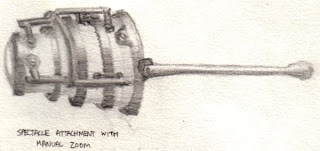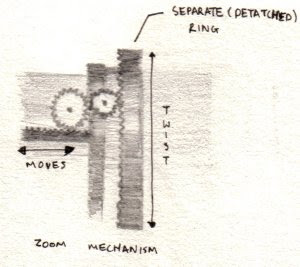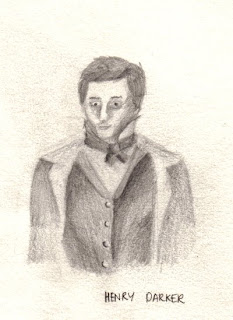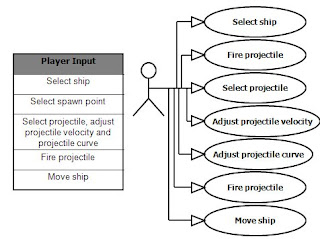Working with Chris Stanton, I first listed four games that we were both familiar with and proceeded to rate them with the prescribed system, as below, with explanations:
1 Outstanding
2 Excellent
3 Good
4 Indifferent
5 Bad
Following this, the games concept was described and evaluated. For clarity, I have organised the document under the headings of each game name.
Threadspace: HyperbolGenre: Tactical/Strategy
Concept: The player pilots a single spaceship on a 2D plane with the ability to build and fire a large variety of weapons and deployables, applying curve and adjusting the velocity. Projectiles range from simple direct damage to other ships to deployables which remain stationary and change the course of other projectiles (i.e. gravity and anti-gravity). The majority of gameplay takes place online interacting with other human players.
Rating: 3/5, the game allows for a wide variety of tactics by offering the user a large arsenal of projectiles to use, but fails in that, for new players, this is over-complex and confusing resulting in a steep learning curve.
The Elder Scrolls IV: OblivionGenre: RPG
Concept: The player controls a single character from a first-person perspective with the goal of improving the character by defeating computer AI enemies and completing quests. The player is immersed in a fantasy 3D world and left to free roam or work to complete the main storyline set of quests.
Rating: 3/5, immediately immersive through the quality of graphics and 3D environments, Oblivion quickly gets tiring for lack of variation. Gains bonus points for a large variety of third-party mods available for the PC version.
The Sims
Genre: Simulation
Concept: The Sims is based around indirectly and directly controlling a family of AI characters, building up their house, jobs, relationships, friendships and money using an overhead perspective.
Rating: 2/5, at its time of release, The Sims was an innovative game, allowing a lot of free play and a variety of goals it reached a wide audience, however, after some time your characters reach the peak of their job roles and your house is grossly huge with all the accessories bought and it becomes repetitive.
Soul Caliber
Genre: Action/Beat 'em Up
Concept: Using a 3D dynamic, rotating view and glorifying violence, Soul Caliber puts the user in control of a character with the soul objective (hoho) of defeating the opponent in a quick match by depleting all of their hit-points. The user presses various button combinations and the character will slash, kick and perform throwing combos. The gameplay is designed to be very casual, games lasting only a few minutes. There are multiplayer options to compete with your friends.
Rating: 2/5, the game is easy to pick up and start playing -- you press a button and your character will attack. With fast-paced gameplay and multiplayer ability, it can be fun to compete with your friends, however, the singleplayer quickly gets repetitive because of a lack of variety in gameplay.







